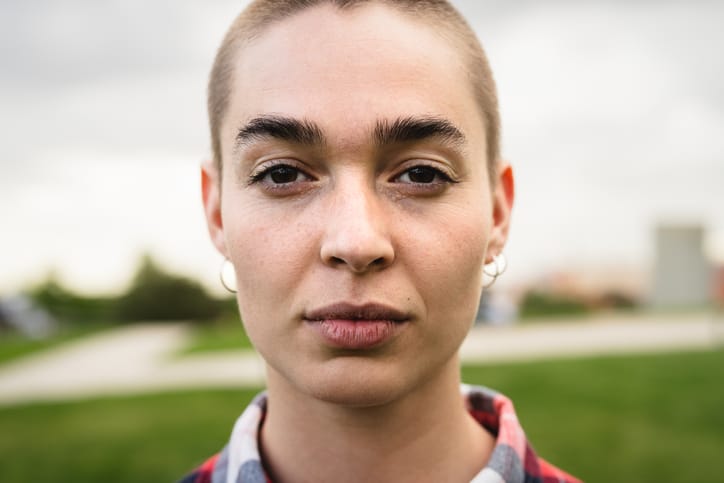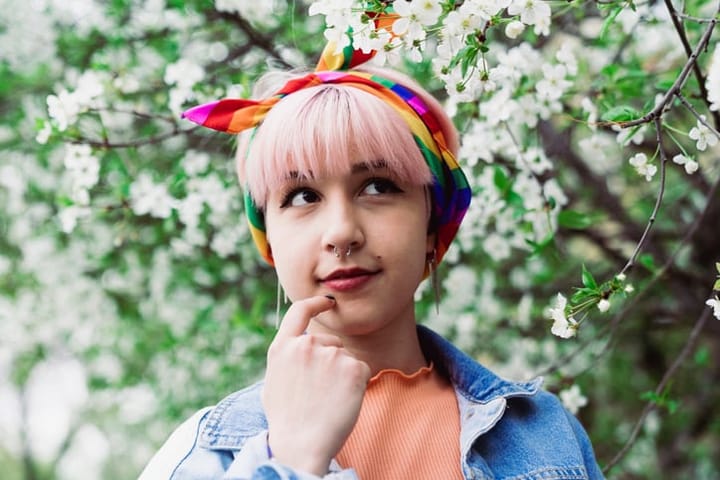Whether you’re coming to terms with your sexuality or are trying to support a friend who just came out, pansexuality is pretty misunderstood. If you’re unsure what this sexual orientation really means or feel confused by some of the things you’ve heard about it, here’s the truth.
What is pansexuality?
Pansexuality is a sexual orientation where someone’s sex or gender does not play a role in their attraction. It essentially means that person has the capacity to be attracted to people of any gender or sexual orientation. For instance, someone who’s pansexual would happily date cis or trans men or women, and those people could identify as straight, bisexual, gay, queer, or any other orientation. In other words, pansexuality puts no limits on love or sexual attraction.
Misconceptions about pansexuality
- It’s a replacement for bisexuality. Pansexuality is not replacing bisexuality. People who are pansexual are regularly asked why they’re not bisexual, and bisexuals are regularly asked why they’re not pansexual. Neither of these terms is a replacement for the other. Some people think the definition of pansexuality fits them better than bisexuality does or vice versa. For other people, it’s even as simple as they just like the words bi or pan more or think one pride flag looks nicer than the other. Whatever the reason, it’s not right to pressure bi or pan people to switch labels. Let people identify how they identify; they know their sexuality better than anyone else does.
- It’s a more “inclusive” version of bisexuality. Pansexuality is not more inclusive sexuality than bisexuality. Bisexuality means being attracted to more than one gender. Many people interpret this as bisexuals are only attracted to cis men and cis women, which isn’t the case. Trans men and women are still men and women, so they fall into being attracted to these genders. Plus, there are more than two genders, so bisexuality is also inclusive of non-binary people, agender people, gender non-conforming and gender fluid people, and more.
- The LGBTQ+ community is just making things up. The idea of pansexuality is nothing new, but it’s only been in recent years that the term has become more popularized. Sigmund Freud actually used the term to detail his views on sexual instincts in the early 1900s. One participant in a study in the Journal of Bisexuality explained, “I describe myself as bisexual. However, I see ‘bisexual’ as meaning ‘attracted to my own gender and genders that are not my own.’ I use ‘bisexual’ because it’s the more common term. I’m questioned enough for being bisexual without having to explain what ‘pansexual’ means as well, so I just don’t bother to use the word ‘pansexual’ in normal interaction with people outside the queer community.”
- Pansexuals are attracted to pans. This joke is so overdone, but no, pansexuals aren’t attracted to pans or any other kitchenware. How this is even a thing is beyond me, but it needs to go.
- It’s only about sex. Sexuality and gender are complex, so some people use different labels to describe themselves. Pansexuality means being sexually attracted to people without gender playing a role. Most people experience romantic and sexual attraction at the same time, so they don’t realize these are separate things and can occur without the other. You can be panromantic but not pansexual. This means you’re romantically attracted to people regardless of gender. So, if this is the case, then you could also be asexual, meaning you experience little to no sexual attraction, or demisexual, meaning you only experience sexual attraction after forming an emotional connection with someone.
- Pansexuals are greedy. A lot of the negative stereotypes associated with bisexuality also get pushed onto pansexuality. Pan people are not greedy. Bi and pan people are often discriminated against by monosexual people (people attracted to one gender). So how are they greedy if lots of gay and straight people don’t want to date them in the first place?
- Pansexuals are more likely to cheat. While LGBTQ+ people are more likely to engage in polyamorous relationships, that does not mean that pan people are more likely to cheat or that pan people dislike monogamy. If anything, people willing to enter an open relationship or try swinging are probably less likely to cheat since they’re not actually going behind anyone’s back. In fact, a lot of pan people are pretty frustrated when straight couples “unicorn hunting” try to rope them in. Unicorn hunting is when a couple -usually a straight couple – wants to involve someone else – usually bi or pan women – in their sex life. Lots of pansexual people are faithful to their partners and have no interest in anything other than monogamy.
- It’s a choice. Your sexuality isn’t a choice. You can’t choose to be gay or straight, so accusations that pansexual people are just choosing to identify that way to be “woke” are completely unfounded.
- All pansexuals are kinky. Kinks and BSDM are not exclusive to the LGBTQ+ community either. So, many pansexual people also aren’t impressed when people pursuing them are only doing so because they assume they’ll be down for anything. One study found that out of 115 participants who identified as kinky, 44% of them identified as bisexual or queer. LGBTQ+ people may be more open to kink, BDSM, or polyamory because they’re already used to the idea of non-normative sexuality. But again, it’s not accurate to claim that pansexuality is inherently kinky.




